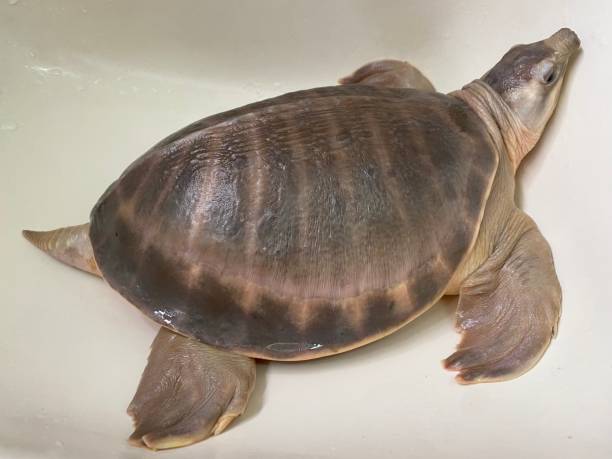Premium Pets From Fly River Turtle

Habitat and Ecology of the Fly River Turtle
Introduction Understanding the habitat and ecological requirements of the Fly River Turtle is critical for its conservation. This article delves into the natural environment of the Fly River Turtle and its ecological role.
Natural Habitat
Preferred Environments: Fly River Turtles thrive in warm, slow-moving freshwater environments, such as rivers and wetlands. They require a combination of open water for swimming and areas with submerged vegetation for foraging.
Water Quality: Clean water is essential for the health of these turtles. They are sensitive to pollutants and require environments with low levels of toxins and high oxygen content.
Role in the Ecosystem
Nutrient Cycling: As herbivores, Fly River Turtles play a significant role in the aquatic ecosystem by consuming plant material and contributing to nutrient cycling. Their foraging activities help maintain healthy aquatic vegetation.
Plant Dispersal: By consuming fruits and seeds, these turtles assist in the dispersal of various plant species, promoting biodiversity in their habitats.
Adaptations to Habitat
Physical Adaptations: The streamlined shell and flipper-like limbs of the Fly River Turtle are adaptations for a semi-aquatic lifestyle, allowing them to maneuver efficiently in water.
Behavioral Adaptations: These turtles often bask on riverbanks to regulate their body temperature and can hold their breath for extended periods while foraging underwater.
Conclusion Protecting the Fly River Turtle's natural habitat is crucial for maintaining its population and the health of the freshwater ecosystems they inhabit. Conservation efforts must focus on preserving these vital habitats to ensure their survival.
4. The Life Cycle of the Fly River Turtle: From Hatchling to Adult
Introduction The life cycle of the Fly River Turtle is a fascinating journey, encompassing various stages from hatchling to adult. Understanding these stages is essential for conservation and captive care.
Egg Laying and Incubation
Nesting Behaviors: Female Fly River Turtles typically nest in sandy or soft soil near water bodies. They often choose areas with minimal disturbance.
Eggs and Incubation: A clutch can contain 10 to 30 eggs, which are buried in the sand. The incubation period lasts around 50 to 70 days, depending on environmental conditions like temperature and humidity.
Hatchlings and Juveniles
Hatchling Characteristics: Upon hatching, baby turtles are about 2 inches long and possess soft shells. They are highly vulnerable to predators and environmental challenges.
Survival Challenges: Hatchlings must navigate a range of threats, including birds, fish, and other predators. Their early diet consists of small aquatic plants and invertebrates.
Growth Rates: Juveniles grow rapidly during their first few years, transitioning to a diet that includes more robust plant material as they mature.
Maturity and Reproduction
Reaching Maturity: Fly River Turtles typically reach sexual maturity between 6 and 10 years of age. Maturity can vary based on environmental factors and food availability.
Mating Behaviors: During the breeding season, males engage in courtship displays, including head bobbing and gentle nudging. Females select mates based on these displays.
Conclusion Understanding the life cycle of the Fly River Turtle is crucial for conservation and captive breeding programs. Protecting nesting sites and ensuring safe habitats for hatchlings can significantly impact population recovery efforts.
5. Caring for Fly River Turtles in Captivity: A Guide for Enthusiasts
Introduction For turtle enthusiasts considering keeping a Fly River Turtle in captivity, understanding their specific care requirements is essential for ensuring their health and well-being.
Setting Up the Habitat
Tank Size and Setup: A minimum tank size of 100 gallons is recommended for adult Fly River Turtles. The tank should include both swimming areas and basking spots. Use a sandy substrate that mimics their natural habitat.
Water Quality: Invest in a high-quality filtration system to maintain clean water. Regular water changes (25% weekly) are crucial to prevent the buildup of harmful toxins.
Dietary Needs
Nutritional Requirements: Fly River Turtles are primarily herbivorous. A diet rich in leafy greens (e.g., collard greens, romaine lettuce), aquatic plants, and occasional fruits should be provided.
Supplementing Diet: Offer high-quality commercial turtle pellets designed for herbivorous species, along with occasional protein sources like insects or fish to ensure a balanced diet.
Health and Wellness
Signs of a Healthy Turtle: Healthy Fly River Turtles are active, have clear eyes, and exhibit normal basking and swimming behaviors. Monitor for any changes in appetite or behavior, which may indicate health issues.
Common Health Issues: Be vigilant for signs of respiratory infections or shell rot, often caused by poor water quality or inadequate basking. Regular veterinary check-ups with a reptile specialist are advisable.
Conclusion Caring for a Fly River Turtle in captivity requires dedication and an understanding of their specific needs. Providing a suitable environment, a balanced diet, and regular health checks will help ensure a long and healthy life for these unique turtles.
Note: IndiBlogHub features both user-submitted and editorial content. We do not verify third-party contributions. Read our Disclaimer and Privacy Policyfor details.





